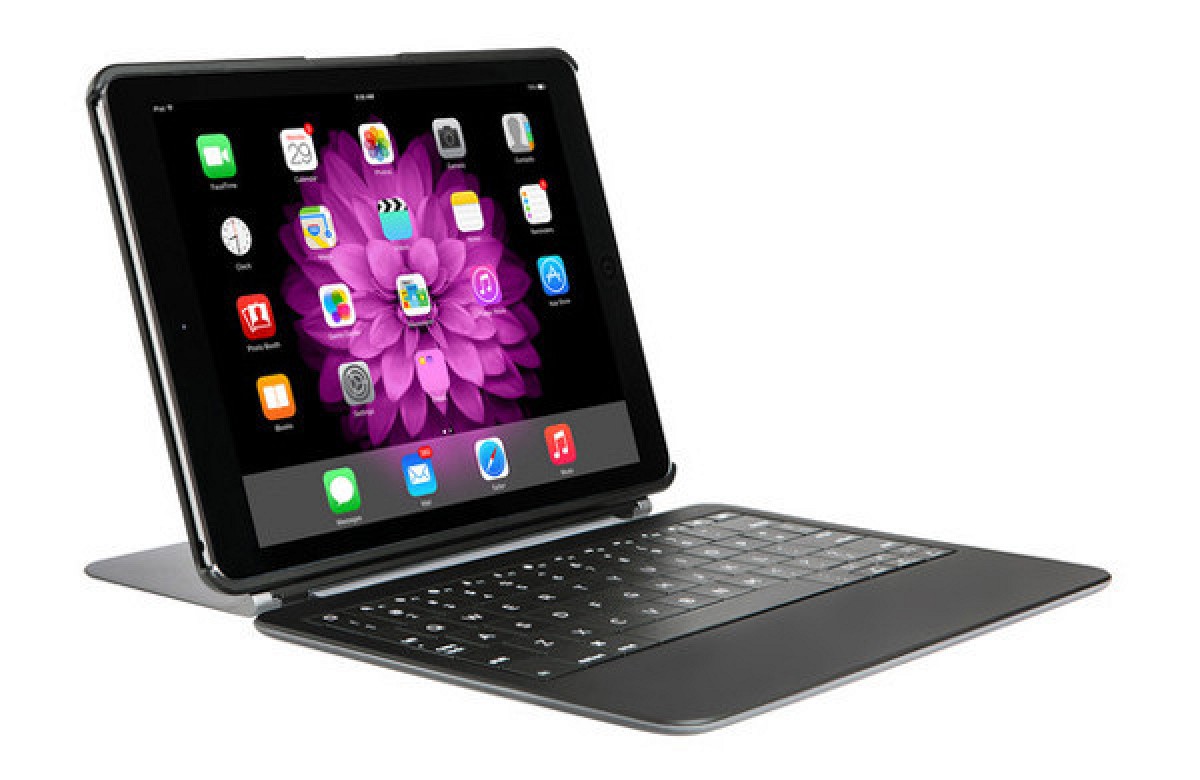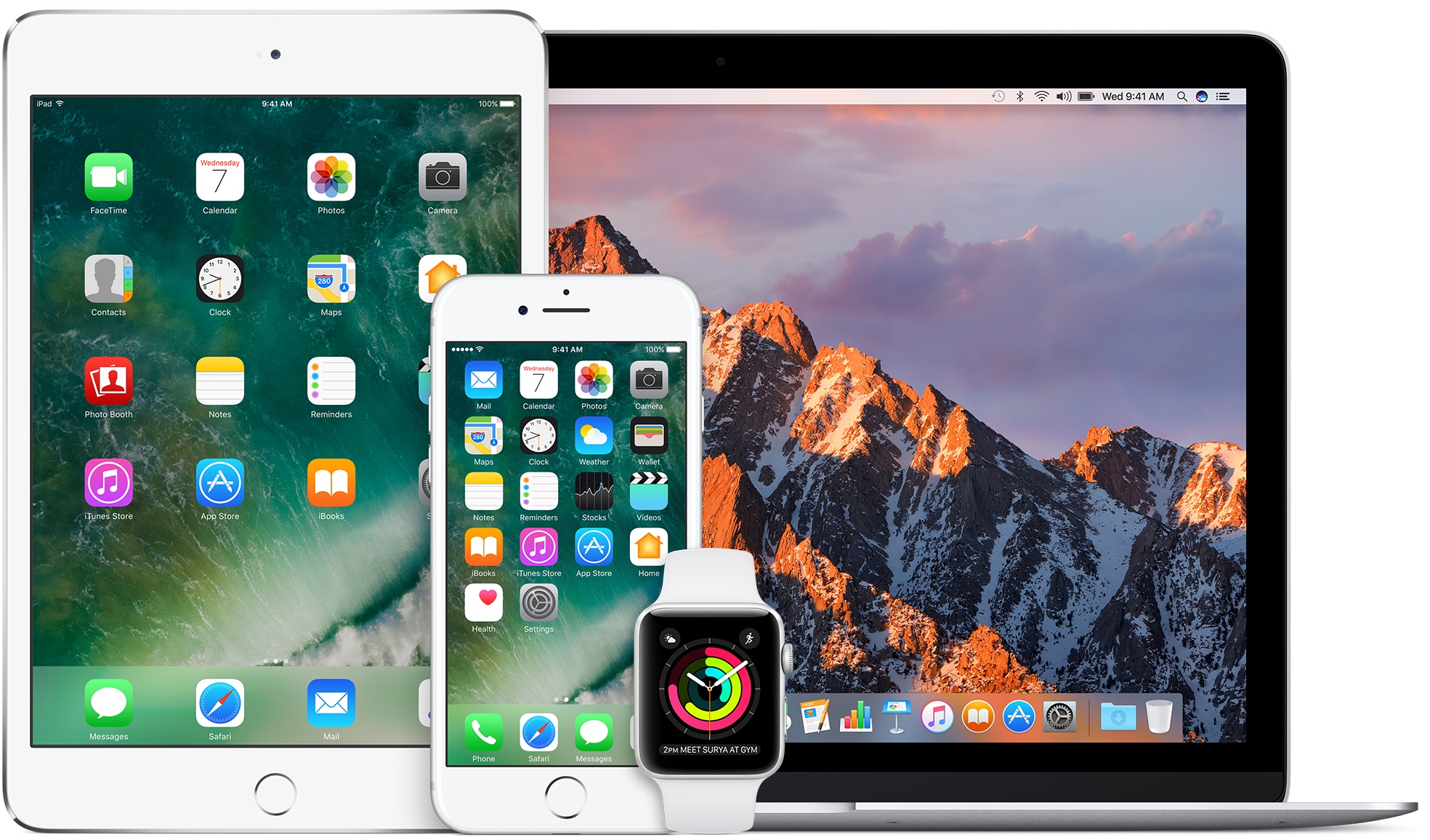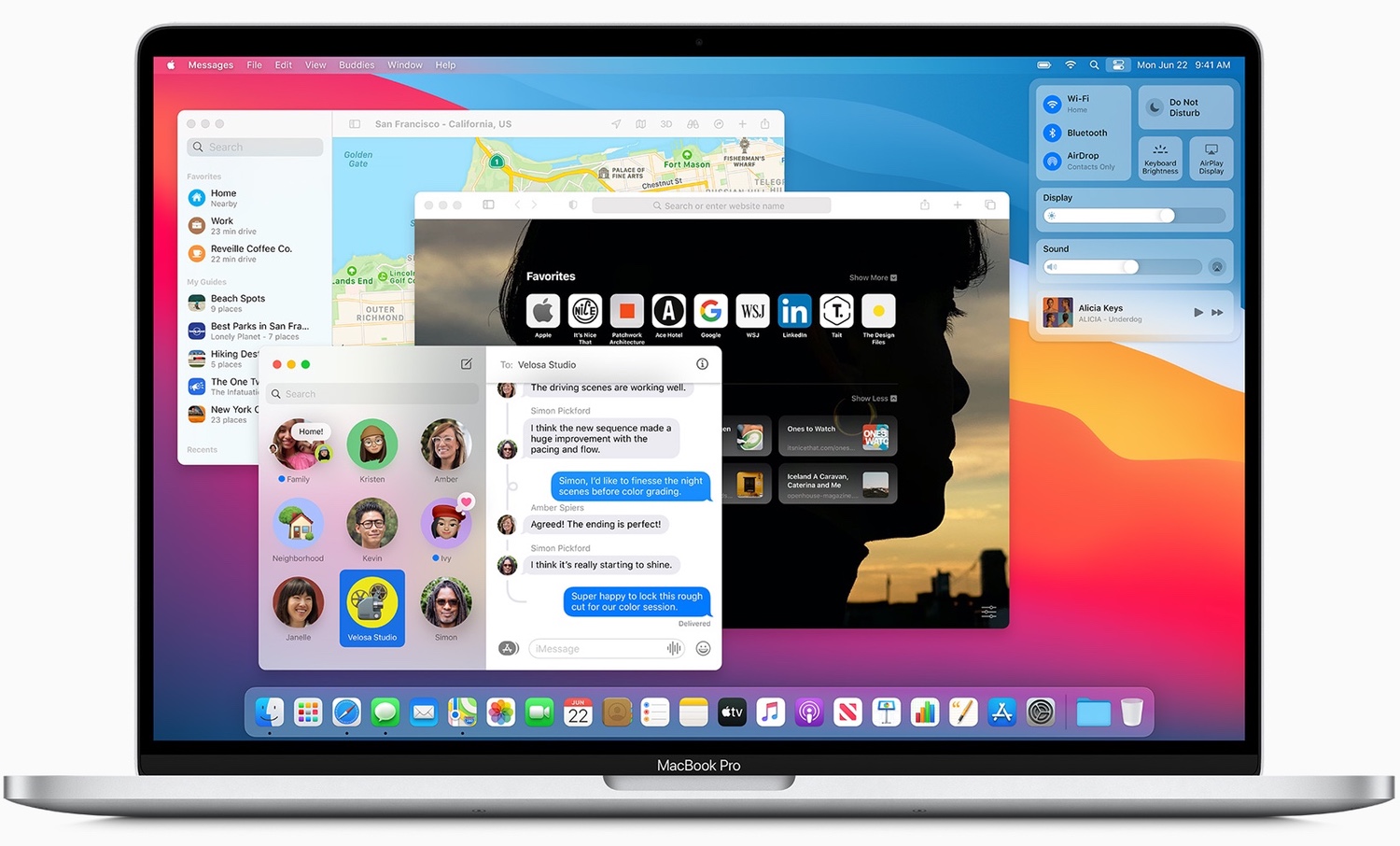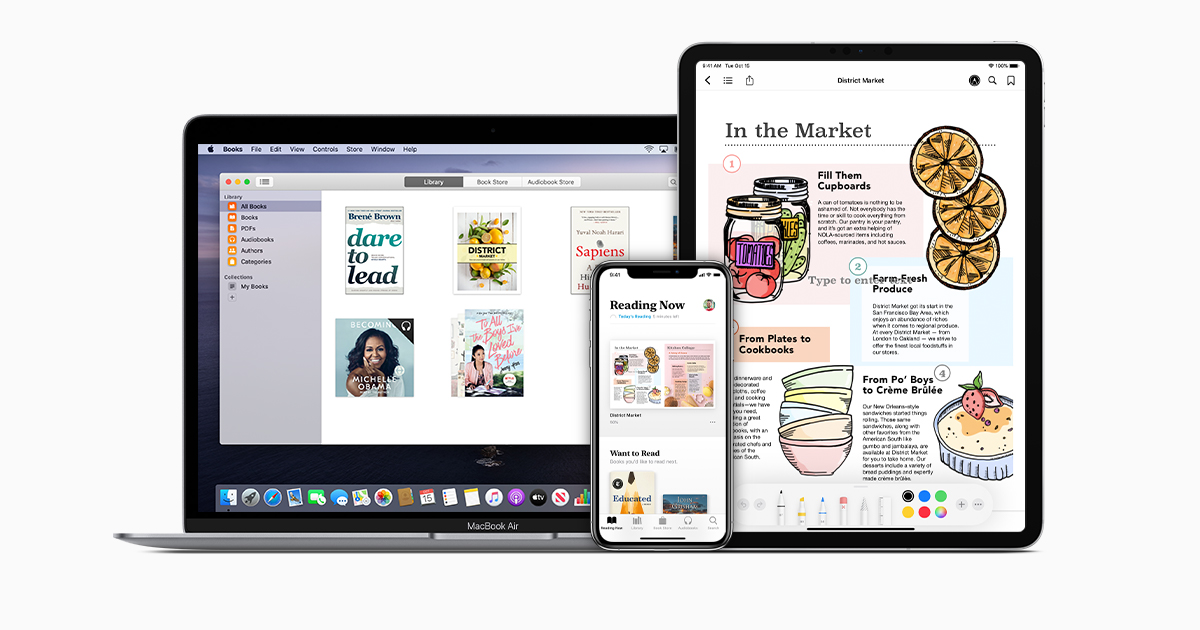So everything's always available on your iPad, iPhone, and Mac, and even from a Windows PC. Learn more about iCloud. It's designed to be secure. And to protect your privacy. Your stuff is safe. That's because iPad comes with advanced security features like Face ID or Touch ID for secure authentication. The authentication data is. Locate iPhone or iPad Backups on a Mac. On Mac OS X, you can find iPhone or iPad backups created by iTunes (macOS 10.14 or earlier) or Finder (in macOS 10.15 or later) in /Library/Application Support/MobileSync. Each backup is stored in a separate folder named with a long string of random letters and numbers. Aug 07, 2020. Connect your device to your Mac. You can connect your device using a USB or USB-C cable or using a Wi-Fi connection. To turn on Wi-Fi syncing, see Sync content between your Mac and iPhone or iPad over Wi-Fi. In the Finder on your Mac, select the device in the Finder sidebar. Select a type of content you want to sync in the button bar. Explore the world of iPad. Featuring iPad Pro in two sizes, iPad Air, iPad, and iPad mini. Visit the Apple site to learn, buy, and get support.
With iPad, you get what you need from a computer, along with many incredible things you'd never expect from one. Here are a few reasons why your next computer just might be an iPad.
It has the power of a computer.
And the portability of iPad.
iPad features advanced, Apple‑designed chips that transform how you experience photos, gaming, and augmented reality. They also make iPad powerful enough to handle the apps you use every day, whether you're using Microsoft Office for a work assignment or Adobe Photoshop CC for a creative project.
And all that power really travels. iPad is incredibly thin and so light you can carry it with you everywhere. And it has up to 10 hours of battery life to keep you going all day.1 Stay connected on the go with fast Wi‑Fi and up to Gigabit‑class LTE.2 You can even print, project, and send files wirelessly.
It's designed so you can do everything easily with touch.
iPad does what a computer does, but in more intuitive ways. Whether you want to focus on a single app or use multiple apps at the same time, it's easy to do with a few taps. Move objects between apps simply by dragging and dropping, or switch apps with a single swipe.
It's familiar to use but makes for an entirely new experience. iPadOS is full of features designed specifically for iPad, and there are even more when you use an Apple Pencil3 or a trackpad. It's built on the same foundation as iOS, so it shares many of the same great apps and features. And just like your iPhone, using iPad is just as simple as tap, swipe, pinch, and zoom.
You can use it with a keyboard, trackpad, and Apple Pencil.
iPad works with a keyboard or trackpad when you need one. The onscreen keyboard lets you respond to an email or write a paper, and it responds to Multi‑Touch gestures. And if you want a physical keyboard or a trackpad, simply connect one. The cursor for iPadOS is designed to complement the familiar Multi‑Touch experience of iPad and transforms into the tool you need depending on the content you're pointing to, like buttons, app icons, and text.4
And with Apple Pencil, it's also your notepad, canvas, scanner, and more. Take notes with Apple Pencil. Scan a document with the built‑in camera, then mark it up and send it. And with iPadOS, your handwriting becomes as powerful as typed text. Convert your sketches into perfect shapes, turn handwritten notes into typed text, and write in any text field with Scribble.
It has the apps you expect on a computer, plus a million designed just for iPad.
iPad has great apps you'll use every day. Like Photos, Messages, Apple News, Safari, Mail, Calendar, and more. It also comes with great productivity apps like Pages and Keynote and runs familiar apps like Microsoft Word and Adobe Photoshop CC.
There's an app for that. Apps in the App Store are designed to take full advantage of the power and large display of iPad. And our App Store editors curate and recommend the best apps in the world to help you create, have fun, learn, and get things done. You can also use apps to transform your world with augmented reality experiences.
Discover apps for iPad in the App StoreIt has a place for your files, and a way to get to them
from all your devices.
Cost Of An Apple Ipad
All your files in one central location. With the Files app, you can access and manage what's on iCloud Drive, an external storage device, or third‑party cloud services such as Box and Dropbox.
And with iCloud, all your important stuff is on all your devices. Safely store your photos, videos, music, apps, files, contacts, and more. So everything's always available on your iPad, iPhone, and Mac, and even from a Windows PC.5
Ipad Iphone Macbook
Learn more about iCloudIt's designed to be secure. And to protect your privacy.

Your stuff is safe. That's because iPad comes with advanced security features like Face ID or Touch ID for secure authentication. The authentication data is encrypted and protected by the Secure Enclave on your device, not stored on Apple servers or backed up to iCloud. iPadOS also has features like Intelligent Tracking Prevention in Safari, which helps protect against websites collecting your personal data.
Learn more about our approach to privacyIt stays up to date automatically.

With iPad, you get hassle‑free updates. Turn on Automatic Updates in iPadOS and have free updates downloaded wirelessly on your iPad as soon as they're released. So you have the newest features, most advanced technologies, and latest security updates.
See what's new in iPadOSIt's designed with accessibility in mind.
Iphone Ipad & Mac Repair Bar
We believe technology is most powerful when it empowers everyone. That's why iPad comes with accessibility features that support vision, hearing, mobility, and learning needs. Including Voice Control, which lets you command your iPad with just your voice, and Switch Control, which lets you interact with iPad without touching it.
Explore all accessibility features on iPadWith Apple Trade In, just give
us your eligible iPad and get
credit for a new one. It's good
for you and the planet.*
Find the right iPad for you.
iPad Pro
The ultimate iPad experience.
New iPad Air
Powerful. Colorful. Wonderful.
New iPad
Delightfully capable. Surprisingly affordable.
iPad mini
Small in size. Big on capability.
If your computer doesn't recognize your connected device, you might see an unknown error or a '0xE' error. If you do, follow these steps and try to connect your device again after each step:

- Make sure that your iOS or iPadOS device is unlocked and on the Home screen.
- Check that you have the latest software on your Mac or Windows PC. If you're using iTunes, make sure you have the latest version.
- Make sure that your device is turned on.
- If you see a Trust this Computer alert, unlock your device and tap Trust.
- Unplug all USB accessories from your computer except for your device. Try each USB port to see if one works. Then try a different Apple USB cable.*
- Restart your computer.
- Restart your device:
- Try connecting your device to another computer. If you have the same issue on another computer, contact Apple Support.
For more help, follow the steps below for your Mac or Windows PC.
* Learn how to connect iPad Pro (11-inch) or iPad Pro 12.9-inch (3rd generation) to your computer.
If you use a Mac
- Connect your iOS or iPadOS device and make sure that it's unlocked and on the Home screen.
- On your Mac, hold down the Option key, click the Apple menu, and choose System Information or System Report.
- From the list on the left, select USB.
- If you see your iPhone, iPad, or iPod under USB Device Tree, get the latest macOS or install the latest updates. If you don't see your device or still need help, contact Apple Support.
If you use a Windows PC
The steps differ depending on if you downloaded iTunes from the Microsoft Store or from Apple.
Ipads At The Apple Store
If you downloaded iTunes from the Microsoft Store
Follow these steps to reinstall the Apple Mobile Device USB driver:
- Disconnect your device from your computer.
- Unlock your iOS or iPadOS device and go to the Home screen. Then reconnect your device. If iTunes opens, close it.
- Click and hold (or right-click) the Start button, then choose Device Manager.
- Locate and expand the Portable Devices section.
- Look for your connected device (such as Apple iPhone), then right-click on the device name and choose Update driver.
- Select 'Search automatically for updated driver software.'
- After the software installs, go to Settings > Update & Security > Windows Update and verify that no other updates are available.
- Open iTunes.
If you downloaded iTunes from Apple
Follow these steps to reinstall the Apple Mobile Device USB driver:
- Disconnect your device from your computer.
- Unlock your iOS or iPadOS device and go to the Home screen. Then reconnect your device. If iTunes opens, close it.
- Press the Windows and R key on your keyboard to open the Run command.
- In the Run window, enter:
%ProgramFiles%Common FilesAppleMobile Device SupportDrivers - Click OK.
- Right-click on the
usbaapl64.inforusbaapl.inffile and choose Install.
You might see other files that start withusbaapl64orusbaapl. Make sure to install the file that ends in .inf. If you're not sure which file to install, right-click a blank area in the File Explorer Window, click View, then click Details to find the correct file type. You want to install the Setup Information file. - Disconnect your device from your computer, then restart your computer.
- Reconnect your device and open iTunes.
If your device still isn't recognized
Check Device Manager to see if the Apple Mobile Device USB driver is installed. Follow these steps to open Device Manager:
- Press the Windows and R key on your keyboard to open the Run command.
- In the Run window, enter
devmgmt.msc, then click OK. Device Manager should open. - Locate and expand the Universal Serial Bus controllers section.
- Look for the Apple Mobile Device USB driver.

If you don't see the Apple Mobile Device USB Driver or you see Unknown Device:
- Connect your device to your computer with a different USB cable.
- Connect your device to a different computer. If you have the same issue on another computer, contact Apple Support.
If you see the Apple Mobile Device USB driver with an error symbol:

Your stuff is safe. That's because iPad comes with advanced security features like Face ID or Touch ID for secure authentication. The authentication data is encrypted and protected by the Secure Enclave on your device, not stored on Apple servers or backed up to iCloud. iPadOS also has features like Intelligent Tracking Prevention in Safari, which helps protect against websites collecting your personal data.
Learn more about our approach to privacyIt stays up to date automatically.
With iPad, you get hassle‑free updates. Turn on Automatic Updates in iPadOS and have free updates downloaded wirelessly on your iPad as soon as they're released. So you have the newest features, most advanced technologies, and latest security updates.
See what's new in iPadOSIt's designed with accessibility in mind.
Iphone Ipad & Mac Repair Bar
We believe technology is most powerful when it empowers everyone. That's why iPad comes with accessibility features that support vision, hearing, mobility, and learning needs. Including Voice Control, which lets you command your iPad with just your voice, and Switch Control, which lets you interact with iPad without touching it.
Explore all accessibility features on iPadWith Apple Trade In, just give
us your eligible iPad and get
credit for a new one. It's good
for you and the planet.*
Find the right iPad for you.
iPad Pro
The ultimate iPad experience.
New iPad Air
Powerful. Colorful. Wonderful.
New iPad
Delightfully capable. Surprisingly affordable.
iPad mini
Small in size. Big on capability.
If your computer doesn't recognize your connected device, you might see an unknown error or a '0xE' error. If you do, follow these steps and try to connect your device again after each step:
- Make sure that your iOS or iPadOS device is unlocked and on the Home screen.
- Check that you have the latest software on your Mac or Windows PC. If you're using iTunes, make sure you have the latest version.
- Make sure that your device is turned on.
- If you see a Trust this Computer alert, unlock your device and tap Trust.
- Unplug all USB accessories from your computer except for your device. Try each USB port to see if one works. Then try a different Apple USB cable.*
- Restart your computer.
- Restart your device:
- Try connecting your device to another computer. If you have the same issue on another computer, contact Apple Support.
For more help, follow the steps below for your Mac or Windows PC.
* Learn how to connect iPad Pro (11-inch) or iPad Pro 12.9-inch (3rd generation) to your computer.
If you use a Mac
- Connect your iOS or iPadOS device and make sure that it's unlocked and on the Home screen.
- On your Mac, hold down the Option key, click the Apple menu, and choose System Information or System Report.
- From the list on the left, select USB.
- If you see your iPhone, iPad, or iPod under USB Device Tree, get the latest macOS or install the latest updates. If you don't see your device or still need help, contact Apple Support.
If you use a Windows PC
The steps differ depending on if you downloaded iTunes from the Microsoft Store or from Apple.
Ipads At The Apple Store
If you downloaded iTunes from the Microsoft Store
Follow these steps to reinstall the Apple Mobile Device USB driver:
- Disconnect your device from your computer.
- Unlock your iOS or iPadOS device and go to the Home screen. Then reconnect your device. If iTunes opens, close it.
- Click and hold (or right-click) the Start button, then choose Device Manager.
- Locate and expand the Portable Devices section.
- Look for your connected device (such as Apple iPhone), then right-click on the device name and choose Update driver.
- Select 'Search automatically for updated driver software.'
- After the software installs, go to Settings > Update & Security > Windows Update and verify that no other updates are available.
- Open iTunes.
If you downloaded iTunes from Apple
Follow these steps to reinstall the Apple Mobile Device USB driver:
- Disconnect your device from your computer.
- Unlock your iOS or iPadOS device and go to the Home screen. Then reconnect your device. If iTunes opens, close it.
- Press the Windows and R key on your keyboard to open the Run command.
- In the Run window, enter:
%ProgramFiles%Common FilesAppleMobile Device SupportDrivers - Click OK.
- Right-click on the
usbaapl64.inforusbaapl.inffile and choose Install.
You might see other files that start withusbaapl64orusbaapl. Make sure to install the file that ends in .inf. If you're not sure which file to install, right-click a blank area in the File Explorer Window, click View, then click Details to find the correct file type. You want to install the Setup Information file. - Disconnect your device from your computer, then restart your computer.
- Reconnect your device and open iTunes.
If your device still isn't recognized
Check Device Manager to see if the Apple Mobile Device USB driver is installed. Follow these steps to open Device Manager:
- Press the Windows and R key on your keyboard to open the Run command.
- In the Run window, enter
devmgmt.msc, then click OK. Device Manager should open. - Locate and expand the Universal Serial Bus controllers section.
- Look for the Apple Mobile Device USB driver.
If you don't see the Apple Mobile Device USB Driver or you see Unknown Device:
- Connect your device to your computer with a different USB cable.
- Connect your device to a different computer. If you have the same issue on another computer, contact Apple Support.
If you see the Apple Mobile Device USB driver with an error symbol:
If you see , , or next to the Apple Mobile Device USB driver, follow these steps:
- Restart the Apple Mobile Device Service.
- Check for and resolve issues with third-party security software, then restart your computer.
- Try to install the
usbaapl64.inforusbaapl.inffile again.
